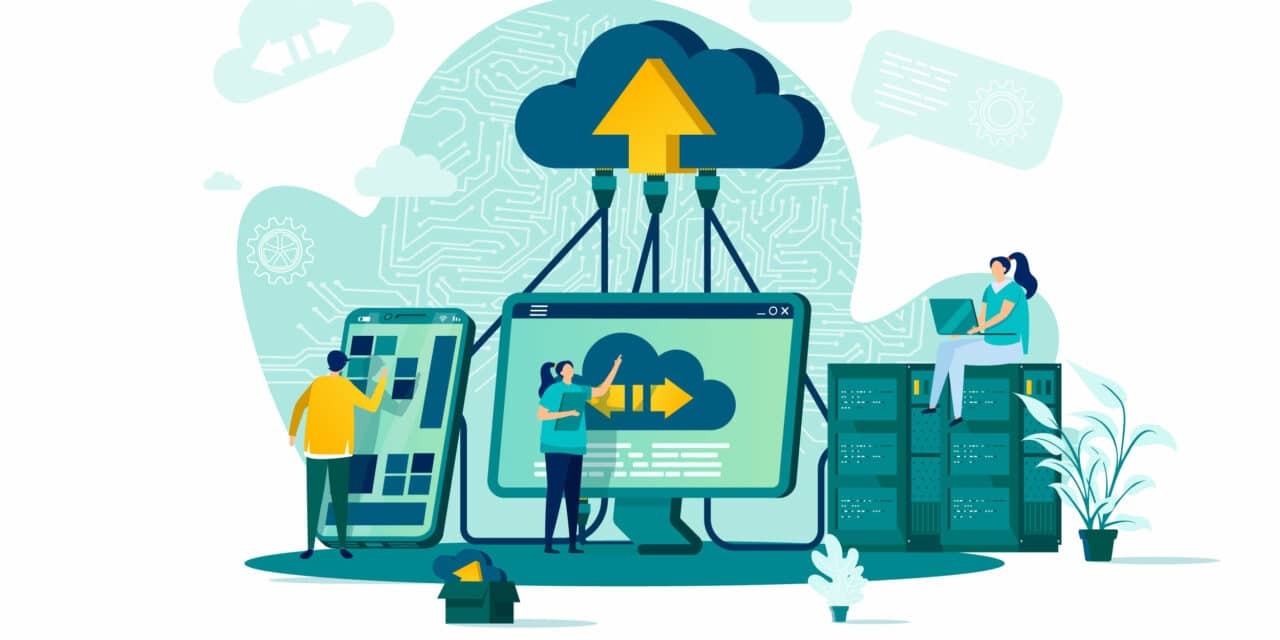Dental Digital Marketing: Why it Should Be a Top Priority
Looking into dental digital marketing? Cloud 9 Software's guide will let you know the different digital marketing strategies for dentists.
Learn MoreCloud-based practice management technology can seem like a mystery, but orthodontic practices that have made the switch have found it surprisingly easy. Like adopting any new technology, it may seem intimidating or overwhelming, but in reality, using cloud-based technology is already something most people are familiar with. It simply means that the practice’s data, and the software itself, is managed offsite and accessed via the Internet. It does not require that you download any software to your computer so it does not eat up computer resources with programs running. The information is accessible from your browser.

“When I am accessing my data, it’s just like typing something into Google,” says Allison Parks Hale, chief operations officer at Parks Orthodontics, York Town, Va. “It’s like signing into Amazon to make a purchase. The framework of the software and the data is all housed ‘in the cloud,’ which is really just large data centers that are somewhere else in the country. Your data is not in-house, but you can access it and the software via the web.”
The functionality of the software is key to keeping the office running smoothly, and some orthodontists may be surprised at how robust cloud-based technology can be. The must-have capabilities are excellent patient records, a solid imaging system, integrated scheduling, reliable communications, and intuitive financial and insurance billing—all of which cloud-based software tends to offer.
“Practices save on hardware by avoiding costly servers and pricey dedicated internet connections,” says Hale. “This software runs with a simple DSL connection, so that makes it easy and reliable. IT costs are diminished because you don’t really need to have your IT guy if you’ve got limited servers and a lack of complicated networks.”
Even so, for those who are ready to ditch the server and backups, they may be worried that data might become lost, corrupted, or degraded while converting to a new system, but companies that make cloud-based software are getting better at migrating seamlessly.
Having your data cloud-based takes some of that [cybersecurity] concern away because your data is not stored in your office
Another concern that always gives practice managers pause is the matter of cybersecurity. The safety and security of data, especially private patient data which must be protected by law and meet compliance standards, is the number one advantage of cloud-based practice management software.
“Having your data cloud-based takes some of that [cybersecurity] concern away because your data is not stored in your office,” says D. Douglas Depew, DMD, MS, a private practice orthodontist with three locations in Atlanta. “Cloud 9 [the software he uses] scrubs for viruses and they have firewalls. And in our offices, we don’t have to back up anymore. It’s done for us. They have built-in redundancies, duplicate servers, and I feel we are much better protected when we have our data stored somewhere else, rather than in our office.
Understandably, orthodontists may be reluctant about Internet outages affecting cloud-based services. While losing your internet connection is becoming rarer by the day, it is possible that it could happen. Practices that would rather not rely 100% on the Internet provided by services can purchase a broadband wireless hotspot just in case the Internet goes down. Or, they can run DSL and Cable internet using a dual-WAN router, and if one goes down the other one will pick up immediately. While most offices will never need this, some practices like the peace of mind to have a backup connection.
The ability to add on third-party apps is another feature that opens up a multitude of possibilities depending on how far a practice wants to take its marketing and communications with patients. Scheduling appointments can be automated, as well as appointment reminders and other announcements. For example, some practices have added an app for two-way text messaging to easily send appointment reminders, which adds value for patients. Having Internet-based technology can be a boon to offices looking to present as modern and in touch with consumer needs.
Contrary to what some may think, switching over from server-based practice management software to cloud-based software is relatively painless. An implementation checklist and planned schedule typically keep things on track with minimal disruption to operations.
The learning curve required to navigate the software is not as daunting as some may initially believe. Because most cloud-based software is designed to be intuitive, most users don’t need as rigorous a training process to get going.
By taking their practice to the cloud, orthodontists who have made the transition say they feel peace of mind with the new level of efficiency and security that now come with the workday.
Originally posted on Orthodontic Products online.